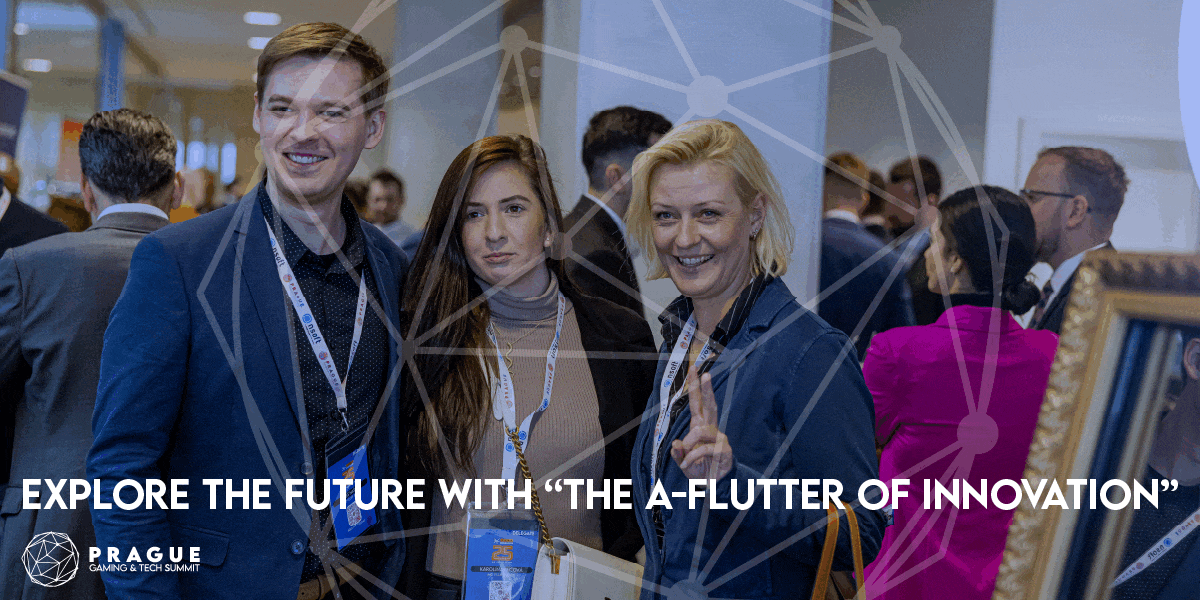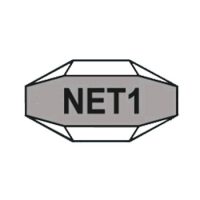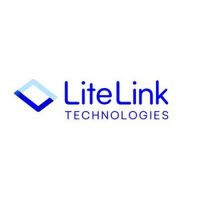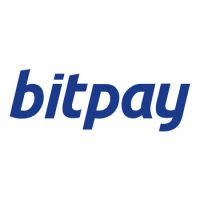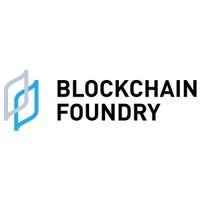Blockchain
Scienjoy Holding Corporation Reports Interim Nine months ended September 30, 2021 Unaudited Financial Results

Scienjoy Holding Corporation (“Scienjoy”, the “Company”, or “We”) (NASDAQ: SJ), a leading live entertainment mobile streaming platform in China, today announced its unaudited financial results for the nine months ended September 30, 2021.
Nine Months 2021 Operating and Financial Highlights
- Total net revenues for the nine months ended September 30, 2021 increased by 52.5% to RMB1,171.2 million (US$181.8 million) from RMB767.8 million in the same period of 2020.
- Gross profit for the nine months ended September 30, 2021 increased by 27.4% to RMB232.4 million (US$36.1 million) from RMB182.4 million in the same period of 2020.
- Net income for the nine months ended September 30, 2021 increased by 7.7% to RMB237.5 million (US$36.9 million) from RMB220.5 million in the same period of 2020.
- Adjusted net income for the nine months ended September 30, 2021 increased by 37.5% to RMB182.6 million (US$28.3 million) from RMB132.8 million in the same period of 2020.
- Total paying users for the nine months ended September 31,2021 decreased by 10.8% to 648,465 from 727,385 in the same period of 2020.
- Active broadcasters for the nine months ended September 31,2021 increased by 28.2% to 250,497 from 195,422 in the same period of 2020.
- As of September 30, 2021, the Company had RMB291.9 million (US$45.3 million) in cash and cash equivalents, which represented an increase of 29.9% from RMB224.8 million as of December 31, 2020.
Mr. Victor He, Chairman and Chief Executive Officer of Scienjoy, commented, “Scienjoy has continued to achieve outstanding financial and operational results in the first nine months of 2021. Our revenues and adjusted net income for the nine months of 2021 are close to the full year results of fiscal year 2020, which reflect tremendous growth in our business. We have made significant progress on improving operating efficiency through refined operations and continued to invest and adopt extensive cutting-edge technologies to improve overall users’ experience. The rapid growth number of active broadcasters has proved our strong capabilities in addressing increasing demands for livestreaming. Looking forward, we are committed to building the metaverse in the livestreaming field, by using Artificial Intelligence (AI), Augmented Reality (AR), Virtual Reality (VR), Mixed Reality (MR), big data, and blockchain to upgrade the fundamental elements of livestreaming settings and expand the offerings of livestreaming content. With the continuous development and application of advanced technologies, we aim to fulfill the fast-evolving expectations of our users and broadcasters, which are building an interactive connection between users and broadcasters and customizing their own experiences with a vast variety of contents and features. We remain optimistic and believe that we are well positioned to continue to capture the opportunity in the rapidly expanding and evolving market for live entertainment mobile streaming.”
Mr. Denny Tang, Chief Financial Officer of Scienjoy, added, “We continued to deliver strong financial results in the first nine months of 2021 as we focused on investing in technologies to improve our platform and delivering the attractive experiences to our users and broadcasters. The significant increase in revenue and adjusted net income demonstrated the attractiveness of our platform. Looking ahead, we will still be dedicated to facilitating user growth, enhancing monetization and developing our technologies and ambition in building metaverse in livestreaming. We are confident that we will continue to generate significant revenue and provide greater value to our shareholders in the long term.”
Nine Months 2021 Financial Results
Total net revenues for the nine months ended September 30, 2021 increased by 52.5% to RMB1,171.2 million (US$181.8 million) from RMB767.8 million in the same period of 2020, because more quality content are provided through our integrated multiple live streaming platforms including Beelive platforms we acquired in September 2020 and our ARPPU for the nine months ended September 30, 2021 increased by 70% comparing to the same period of last year, partially offset by decrease in number of paying users.
Cost of revenues for the nine months ended September 30, 2021 increased by 60.4% to RMB938.8 million (US$145.7 million) from RMB585.4 million in the same period of 2020. The increase was primarily attributable to a 58.7%, or RMB297.0 million, year-over-year increase in the Company’s revenue sharing fees and content costs, which was consistent with the 28.2% year-over-year increase in active broadcasters as well as the growth of the Company’s overall live streaming operations for the nine months ended September 30, 2021. In addition, the Company incurred share based compensation of RMB3.4 million for the nine months ended September 30, 2021 and no such expense incurred in the same period of last year.
Gross profit for the nine months ended September 30, 2021 increased by 27.4% to RMB232.4 million (US$36.1 million) from RMB182.4 million in the same period of 2020.
Total operating expenses for the nine months ended September 30, 2021 increased to RMB85.6 million (US$13.3 million) from RMB41.5 million in the same period of 2020.
- Sales and marketing expenses for the nine months ended September 30, 2021 kept constant at RMB3.7 million (US$0.6 million) as compared to the same period of 2020.
- General and administrative expenses for the nine months ended September 30, 2021 significantly increased to RMB38.6 million (US6.0 million) from RMB19.7 million in the same period of 2020.The increase was primarily because we had a share based compensation of RMB3.6 Million (US$0.6 million) and higher listing-related professional fees, employee salary and welfare and amortization of intangible assets as compared to the same period of 2020.
- Research and development expenses for the nine months ended September 30, 2021 increased by 91.6% to RMB39.8 million (US$6.2 million) from RMB20.8 million in the same period of 2020. The increase was due to higher R&D headcount and the Company had share based compensation of RMB5.4 million (US$0.8 million) in the first nine months ended September 30, 2021.
- Provision for doubtful accounts for the nine months ended September 30, 2021 was RMB3.4 million (US$0.5 million) as compared to a recovery for doubtful accounts of RMB2.7 million in the same period of 2020
Income from operations for the nine months ended September 30, 2021 increased by 4.2% to RMB146.8 million (US$22.8 million) from RMB140.9 million in the same period of 2020.
Change in fair value of contingent consideration for the nine months ended September 30, 2021 decreased by 48.1% to RMB45.5 million (US$7.1 million) from RMB87.6 million in the same period of 2020. Change in fair value of contingent consideration is derived from the Company’s reverse recapitalization with Wealthbridge Acquisition Limited on May 7, 2020, and acquisition of BeeLive on August 10, 2020, which involved payments of future contingent consideration upon the achievement of certain financial performance targets and specific market price levels. Earn out liabilities are recorded for the estimated fair value of the contingent consideration on the merger date. The fair value of the contingent consideration is re-measured at each reporting period, and the change in fair value is recognized as either income or expense.
Change in fair value of warrants liability for the nine months ended September 30, 2021 amount to RMB21.8 million (US$3.4 million). The Company’s warrants assumed from SPAC acquisition that have complex terms, such as a clause in which the warrant agreements contain a cash settlement provision whereby the holders could settle the warrants for cash upon a fundamental transaction that is considered outside of the control of management are considered to be a derivative that are recorded as a liability at fair value. The warrant derivative liability is adjusted to its fair value at the end of each reporting period, with the change being recorded as other expense or gain.
Change in fair value of investment in marketable security for the nine months ended September 30, 2021 amount to RMB27.6 million (US$4.3 million) In January 2021, the Company, through its wholly owned subsidiary, Scienjoy Inc., purchased from Cross Wealth Investment Holding Limited, an entity related to two directors of the Company, 606,061 ordinary shares of Goldenbridge Acquisition Limited (“Goldenbridge”) for an aggregated consideration of US$2 million. Goldenbridge was formed as a special purpose acquisition company. The investment was classified as investment in marketable security, which is adjusted to its fair value at the end of each reporting period, with the change being recorded as other expense or gain.
Net income for the nine months ended September 30, 2021 increased by 7.7% to RMB237.5 million (US$36.9 million) from RMB220.5 million in the same period of 2020.
Adjusted net income for the nine months ended September 30, 2021 increased by 37.5% to RMB182.6 million (US$28.3 million) from RMB132.8 million in the same period of 2020.
Basic and diluted net income per ordinary share for the nine months ended September 30, 2021 were both RMB7.73 (US$1.20). In comparison, basic and diluted net income per ordinary share for the nine months ended September 30, 2020 were both RMB10.14, respectively.
Adjusted basic and diluted net income per ordinary share for the nine months ended September 30, 2021 were both RMB5.94 (US$0.92). In comparison, both adjusted basic and diluted net income per ordinary share for the nine months ended September 30, 2020 were RMB6.11.
As of September 30, 2021, the Company had cash and cash equivalents of RMB291.9 million (US$45.3 million) compared to RMB224.8 million as of December 31, 2020.
Business Outlook
The Company expects its total net revenues to be in the range of RMB393 million to RMB455 million in the fourth quarter of 2021. This forecast reflects the Company’s current and preliminary views on the market and operational conditions, which are subject to change, particularly in respect to the potential impact of COVID-19 on the economy in China and other markets around the world.
About Scienjoy Holding Corporation Limited
Founded in 2011, Scienjoy is a leading mobile livestreaming platform in China, and its core mission is to build a livestreaming service ecosystem to delight and entertain users. With approximately 250 million registered users, Scienjoy currently operates four livestreaming platform brands, including Showself, Lehai, Haixiu, and BeeLive, which features both the Mifeng Chinese version and BeeLive International version. Scienjoy uniquely combines a gamified business approach to livestreaming, in-depth knowledge of the livestreaming industry, and cutting-edge technologies such as blockchain, augmented reality (AR), virtual reality (VR), and big data, to create a unique user experience. Scienjoy is devoted to building a livestreaming Metaverse to provide users with the ultimate immersive experience, a social media network that transcends time and space, a digital community that spans virtual and physical reality, and a content-rich ecosystem. For more information, please visit http://ir.scienjoy.com/.
Use of Non-GAAP Financial Measures
Adjusted net income is calculated as net income adjusted for change in fair value of contingent consideration, change in fair value of warrant liability and share based compensation. Adjusted basic and diluted net income per ordinary share is non-GAAP net income (loss) attributable to ordinary shareholders divided by weighted average number of ordinary shares used in the calculation of non-GAAP basic and diluted net income per ordinary share. The non-GAAP financial measures are presented to enhance investors’ overall understanding of the Company’s financial performance and should not be considered a substitute for, or superior to, the financial information prepared and presented in accordance with U.S. GAAP. Investors are encouraged to review the reconciliation of the historical non-GAAP financial measures to its most directly comparable GAAP financial measures. As non-GAAP financial measures have material limitations as analytical metrics and may not be calculated in the same manner by all companies, they may not be comparable to other similarly titled measures used by other companies. In light of the foregoing limitations, you should not consider non-GAAP financial measures as a substitute for, or superior to, such metrics in accordance with US GAAP.
For more information on these non-GAAP financial measures, please see the table captioned “Reconciliations of Non-GAAP Results” near the end of this release.
Exchange Rate Information
This announcement contains translations of certain RMB amounts into U.S. dollars at a specified rate solely for the convenience of the reader. Unless otherwise noted, all translations from RMB to U.S. dollars are made at a rate of RMB6.4434 to US$1.00, the noon buying rate in effect on September 30, 2021, in the H.10 statistical release of the Federal Reserve Board. The Company makes no representation that the RMB amounts could have been, or could be, converted, realized or settled in U.S. dollars at that rate on September 30, 2021, or at any other rate.
Safe Harbor Statement
Certain statements made in this release are “forward looking statements” within the meaning of the “safe harbor” provisions of the United States Private Securities Litigation Reform Act of 1995. When used in this press release, the words “estimates,” “projected,” “expects,” “anticipates,” “forecasts,” “plans,” “intends,” “believes,” “seeks,” “may,” “will,” “should,” “future,” “propose” and variations of these words or similar expressions (or the negative versions of such words or expressions) are intended to identify forward-looking statements. These forward-looking statements are not guarantees of future performance, conditions or results, and involve a number of known and unknown risks, uncertainties, assumptions and other important factors, many of which are outside the Company’s control, that could cause actual results or outcomes to differ materially from those discussed in the forward-looking statements. Important factors, among others, are: the ability to manage growth; ability to identify and integrate other future acquisitions; ability to obtain additional financing in the future to fund capital expenditures; fluctuations in general economic and business conditions; costs or other factors adversely affecting our profitability; litigation involving patents, intellectual property, and other matters; potential changes in the legislative and regulatory environment; a pandemic or epidemic. The forward-looking statements contained in this release are also subject to other risks and uncertainties, including those more fully described in the Company’s filings with the Securities and Exchange Commission (“SEC”) from time to time. The Company undertakes no obligation to update or revise any forward-looking statements, whether as a result of new information, future events or otherwise, except as required by applicable law. Such information speaks only as of the date of this release.
Blockchain
Blocks & Headlines: Today in Blockchain – April 24, 2025 (Decrypt, CoinDesk, Cointelegraph, 80 Level, UNDP/BGA)

In an era defined by rapid innovation and ever-shifting regulatory landscapes, blockchain continues to prove its mettle across diverse sectors—from data privacy and prediction markets to gaming and sustainable development. Today in Blockchain, we explore five major developments shaping the decentralized world on April 24, 2025:
-
Europe’s New Privacy Guidelines: How the EDPB’s draft rules may redefine on-chain data handling.
-
Canada’s Blockchain Advantage: Lessons from Consensus Toronto on agility, talent, and national strategy.
-
Prediction Markets for Science: DeSci’s leap toward crowdsourced validation and the reproducibility crisis.
-
Ubisoft’s NFT Gaming Gamble: Yet another Web3 pivot in mainstream video games—and why it matters.
-
Blockchain for Good Accelerator: The UNDP joins forces with the Blockchain for Good Alliance to fuel SDG-focused innovation.
This op-ed–style briefing strips away the noise to deliver concise yet detailed coverage, incisive commentary, and big-picture implications for developers, entrepreneurs, regulators, and enthusiasts alike. Strap in as we decode today’s key blockchain headlines.
1. Europe’s Data Privacy Guardrails: EDPB’s Draft Blockchain Guidelines
What happened:
On April 22, 2025, the European Data Protection Board (EDPB) published draft guidelines clarifying how personal data must be stored and accessed on blockchain networks to comply with the General Data Protection Regulation (GDPR). Key takeaways include:
-
Minimize on-chain data: Avoid embedding personally identifiable information directly into immutable ledgers.
-
Data Protection by Design & by Default: Mandate early-stage DPIAs (Data Protection Impact Assessments) for any blockchain project touching personal data.
-
Controlled access & erasure mechanisms: Develop off-chain storage layers and governance protocols to satisfy “right to rectification” and “right to be forgotten” requirements.
Source: Decrypt
Why it matters:
GDPR’s foundational principles clash with blockchain’s inherent immutability and transparency. By issuing these guidelines, the EDPB seeks to preserve individual privacy rights without stifling decentralized innovation. However, the tension between censorship-resistant networks and regulator-mandated mutability raises profound design challenges.
Analysis & Commentary:
Today’s guidance is overdue but pivotal. As Bryn Bennett of Hacken reminds us, “Privacy isn’t an add-on—it’s infrastructure.” Projects that ignore privacy-by-design risk not only fines but also eroded user trust. Conversely, decentralized privacy pioneers like Nym Technologies warn that retrofitting GDPR onto public blockchains can compromise both privacy and sovereignty. In my view, the next frontier lies in hybrid architectures—leveraging off-chain zero-knowledge proofs, secure enclaves, and permissioned sidechains—to reconcile transparency with confidentiality. Europe’s blueprint could become a global reference, influencing regulators in Asia-Pacific, North America, and beyond to articulate their own blockchain-specific data rules.
2. Canada’s Blockchain Advantage: Small Enough to Move Fast, Big Enough to Matter
What happened:
At Consensus Toronto 2025, CoinDesk columnist William Mougayar argued that Canada is uniquely positioned to outpace other G7 nations in blockchain adoption, thanks to:
-
Homegrown talent & heritage: Ethereum’s origins in Toronto and thriving developer ecosystems in Montreal and Vancouver.
-
Regulatory agility: Streamlined federal-provincial coordination, pro-innovation tax credits, and pilot sandbox frameworks.
-
Strategic national vision: Proposals to mandate crypto access in Canadian banks, integrate digital assets into capital markets, and even explore a national cryptocurrency reserve.
Source: CoinDesk
Why it matters:
While the U.S. grapples with interagency turf wars between the SEC, CFTC, and others, Canada’s structural simplicity offers a template for coherent blockchain policymaking. This could accelerate capital inflows, enterprise pilots, and global competition for fintech talent.
Analysis & Commentary:
Canada’s playbook hinges on being “small enough to pivot, yet big enough to impact”. As blockchain matures beyond niche use cases, national champions will emerge from jurisdictions that marry regulatory clarity with creative incentives. I predict that within two years, Toronto and Montreal will rival Miami and Dubai as leading hubs for DeFi, tokenization, and digital-asset custody. But execution is everything—if Canada can streamline licensing, shore up AML/CTF safeguards, and embed digital literacy into its education system, it could truly leapfrog entrenched incumbents.
3. Prediction Markets in Science: DeSci’s Bold Experiment
What happened:
In an opinion piece for Cointelegraph, Dr. Sasha Shilina explored how blockchain-powered prediction markets (e.g., Polymarket, Pump.science) are being repurposed to address the scientific reproducibility crisis. Highlights include:
-
Crowdsourced forecasting: Researchers and investors stake tokens to bet on experimental outcomes, incentivizing rigorous study design.
-
Financial accountability: Monetary losses for flawed work create a rapid feedback loop, potentially weeding out irreproducible findings.
-
Regulatory hurdles: Jurisdictions still classify these markets as gambling, complicating mainstream adoption.
Source: Cointelegraph
Why it matters:
Traditional peer review can take months or years to expose methodological flaws. Decentralized prediction markets promise near-real-time validation, democratizing scientific oversight and reducing wasteful replication studies.
Analysis & Commentary:
Prediction markets offer an “open-science complement”—not a replacement—to scholarly publishing. By aligning economic incentives with truth-seeking, they could elevate data integrity and funders’ confidence. However, unchecked speculation risks gaming the system, especially if liquidity pools are dominated by a handful of whales. The solution lies in multi-stakeholder governance: academic consortia, journal publishers, and veteran researchers collaborating to set market parameters, oracle standards, and dispute-resolution mechanisms. In my view, the coming year will determine whether DeSci moves from proof-of-concept to institutional legitimacy—or remains a fascinating experiment.
4. Ubisoft’s NFT Gaming Bet: Might & Magic Fates
What happened:
On April 24, 2025, gaming giant Ubisoft announced Might & Magic Fates, its third blockchain game in under six months, developed in partnership with Immutable. Key features:
-
NFT trading cards: Creatures, spells, and artifacts minted as on-chain assets.
-
Optional Web3 layer: Players can choose between traditional gameplay or unlocking digital ownership via NFTs.
-
Community backlash: Early reactions decry “Web3 slop,” with seasoned gamers lamenting lack of gameplay previews.
Source: 80 Level
Why it matters:
Ubisoft’s persistence underscores a broader corporate push into play-to-earn and digital-ownership models. Despite vocal skepticism, top publishers see NFTs as a path to new revenue streams and player engagement metrics.
Analysis & Commentary:
I admire Ubisoft’s willingness to iterate—but will “third time be the charm”? Past misfires suggest they’ve yet to nail the balance between token mechanics and fun. If Fates can deliver rich narrative, balanced tokenomics, and genuine secondary-market value, it might convert skeptics. Otherwise, gamers will continue associating NFTs with pump-and-dump schemes. Successful blockchain gaming will require tight integration of on-chain assets with deep, off-chain gameplay loops—think on-chain skins that evolve with player achievements or governance tokens that shape in-game lore. Ubisoft’s true test will be fostering an ecosystem where NFT ownership enhances, rather than distracts from, core gameplay.
5. Blockchain for Good: UNDP & Alliance Launch Global Accelerator
What happened:
The Blockchain for Good Alliance (BGA), in partnership with the United Nations Development Programme (UNDP) and EMURGO Labs, launched the SDG Blockchain Accelerator on April 24, 2025. Program highlights:
-
4-month accelerator: Tailored training, mentorship, and technical support via UNDP AltFinLab and EMURGO Labs.
-
Multi-chain innovation: Encourages solutions across Cardano, Ethereum, and other protocols.
-
Up to $1.5 million in post-acceleration grants: Equity-free funding to scale blockchain solutions addressing the UN’s 17 Sustainable Development Goals (SDGs).
Source: UNDP Innovation
Why it matters:
This initiative bridges Web3 technology with humanitarian impact, channeling blockchain’s transparency and efficiency into real-world challenges—financial inclusion, supply-chain traceability, carbon credits, and more.
Analysis & Commentary:
SDG-focused accelerators signal a shift from speculative token swaps to impact-driven development. By equipping UNDP personnel and global innovators with blockchain toolkits, the program can catalyze projects that deliver measurable social value. Success stories—like transparent vaccine distribution chains or micro-loan platforms for underserved communities—will validate blockchain’s promise beyond hype cycles. I urge stakeholders to watch for pilots that blend on-chain verification with off-chain delivery, ensuring that funding flows transparently and outcomes are independently audited. If this Alliance proves out, it could redefine public-private partnerships in digital development.
Conclusion: Today’s Takeaways & Tomorrow’s Roadmap
These five headlines illustrate blockchain’s multifaceted evolution:
-
Regulatory Maturation: Europe’s privacy guidelines spotlight the need for nuanced frameworks to guide on-chain data use.
-
National Strategies: Canada’s agile approach demonstrates how government policy can catalyze ecosystem growth without heavy-handed bureaucracy.
-
Decentralized Science: Prediction markets could revolutionize research validation, forging new alliances between academia and DeFi.
-
Corporate Experimentation: Ubisoft’s repeated NFT forays reveal both the promise and pitfalls of integrating blockchain into mainstream entertainment.
-
Mission-Driven Innovation: The SDG Blockchain Accelerator aligns decentralized tech with societal goals, charting a course for truly “blockchain for good” outcomes.
As blockchain technology accelerates, the imperative for thoughtful design, cross-sector collaboration, and impact measurement has never been clearer. Whether tackling data privacy conflicts, mobilizing global talent, democratizing scientific rigor, reinventing digital ownership, or driving sustainable development, today’s stories offer a roadmap for the next chapter of decentralized innovation.
Stay tuned for tomorrow’s edition of Blocks & Headlines, where we continue decoding the daily pulse of the blockchain revolution.
The post Blocks & Headlines: Today in Blockchain – April 24, 2025 (Decrypt, CoinDesk, Cointelegraph, 80 Level, UNDP/BGA) appeared first on News, Events, Advertising Options.
Blockchain
World Chess and the Algorand Foundation propose leveling the playing field with a “chess passport”
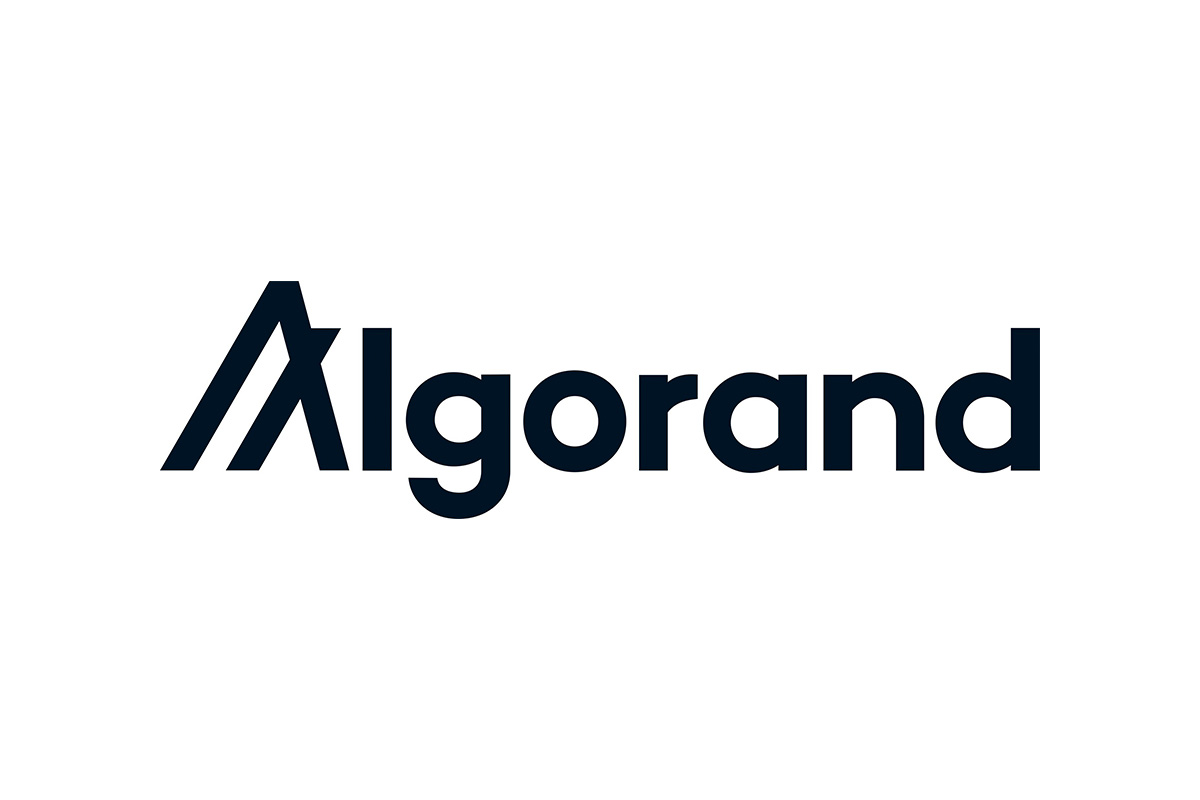
In a whitepaper published today, World Chess (LSE: CHSS) and the Algorand Foundation (ALGO) conceptualize a new blockchain-based system that would establish secure, private, and verifiable credentials for global sports organizations, including chess. Grandmaster Evgenij Miroshnichenko contributed to the paper alongside the Algorand Foundation and World Chess.
The move comes as interest in chess hits a new high, driven by popular television series on Netflix and the BBC, the 2024 awarding of the youngest-ever world chess champion, and the inclusion of chess for the first time in the Esports World Cup later this year.
If adopted, the system would allow chess players to independently manage their identity and credentials across all chess platforms and organizations with a single decentralized ID, and one login credential for everywhere they play. They could then easily “port” their identity, achievements, records of play, rankings, and rewards across online chess platforms, as well as seamlessly from the digital world to in-person games and tournaments. This provides them with a much easier way to prove their identity, no matter their status or documentation; it would also reduce tournament application times significantly. Chess organizations would then be able to welcome even more players to their competitions, including those who have built their chess career solely online, as well as players who have previously only competed in tournaments held by other organizations.
Among other benefits, the adoption of a “global chess passport” would make it much easier for organizers and chess clubs and federations alike to onboard and register players, both online and offline.
Another benefit of the proposed system is to safeguard fair play. As chess becomes increasingly integrated into e-sports and online competitions, the use of AI programs or player fraud (one player representing another) is an increasing concern. Being able to confirm player integrity (including whether they have been banned for cheating on any other platform) ensures credibility of chess contests and competitions. These verifiable credentials also preserve player privacy. They can be used to confirm player eligibility and relevant identity data without providing access to sensitive documentation, such as passports. Finally, identity verification also prevents fraud in tournament payouts. Phishing and other attempts to steal winnings are on the rise; this ensures only the rightful winner can access their prize funds.
“I think that chess needs its version of the global e-version of drivers license. It’s a global game, and using blockchain for the benefit of having one universal independently verifiable ID is something that both players and organizers will certainly benefit from,” says Ilya Merenzon, CEO of World Chess.
“This initiative is not just about chess; it’s about the future of fair play and verifiable achievement across all sports and esports,” said Bruno Martins, principal architect at the Algorand Foundation and co-author of the whitepaper. “Chess has a rich history of proving the usefulness of new technologies. In this case, World Chess is showing the integrity, privacy, and portability of records in any competitive arena is not only possible – it’s in the best interest of every player, everywhere.”
Statista estimates that the market for esports should reach $4.8 billion in 2025, with nearly 900 million players by 2029 (source), all of which could benefit from better cross-platform registration for online and in-person competitions.
The full whitepaper and more information about the proposed open-source system can be found here. Chess platforms, esports organizations and other parties interested in contributing to the project can get involved by contacting [email protected].
The post World Chess and the Algorand Foundation propose leveling the playing field with a “chess passport” appeared first on News, Events, Advertising Options.
Blockchain
Blaqclouds Board Approves 30-Day Revenue Acceleration and Ecosystem Monetization Plan
-

 Blockchain Press Releases6 days ago
Blockchain Press Releases6 days agoBybit’s CEO Meets with Vietnam’s Minister of Finance to Support Regulatory Sandbox and Strengthen Crypto Compliance
-
Blockchain7 days ago
Relm Insurance and Liva Insurance Obtain Central Bank Approval in the UAE for Web3 Insurance Solutions
-

 Blockchain7 days ago
Blockchain7 days agoGlobal Islamic Fintech Forum Kicks off in Dubai
-
Blockchain4 days ago
Islamic finance Market to Reach $3.4 Trillion by 2027 in the short run and $7.7 Trillion by 2033 Globally, at 12.0% CAGR: Allied Market Research
-

 Blockchain Press Releases7 days ago
Blockchain Press Releases7 days agoBybit launches Crypto Surf: Copy Traders and Bots Battle for 250K USDT
-

 Blockchain Press Releases7 days ago
Blockchain Press Releases7 days agoMEXC Announces Listing of Initia (INIT) with a 115,000 INIT and 50,000 USDT Prize Pool
-

 Blockchain3 days ago
Blockchain3 days agoBlocks & Headlines: Today in Blockchain – April 22, 2025 (Activity‑Weighted Consensus, Pectra Upgrade, Yoki Legacy, Verae–Evercycle, Earth Day)
-

 Blockchain1 day ago
Blockchain1 day agoBlocks & Headlines: Today in Blockchain – April 23, 2025 – EDPB, Binance, MicroCloud, Nile Coin, TruaBroker

